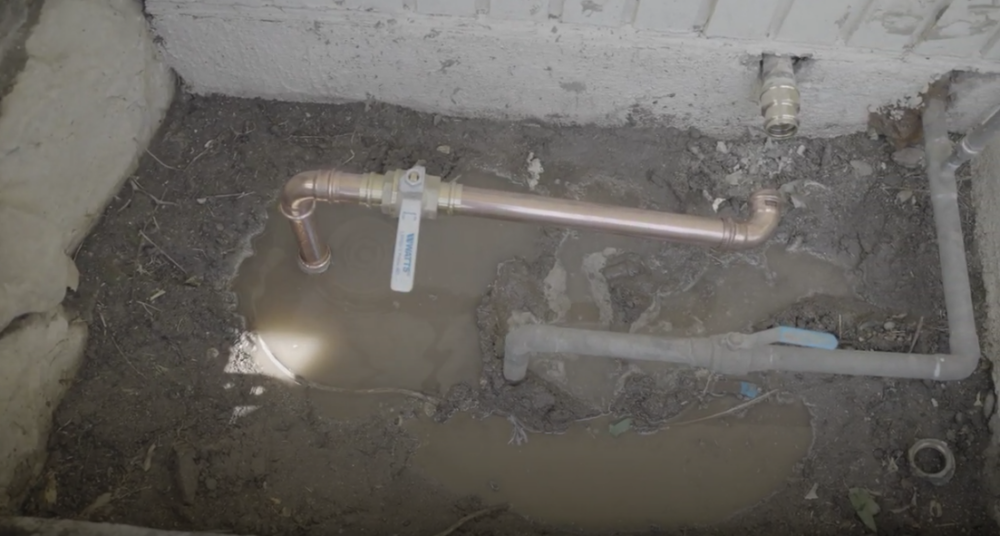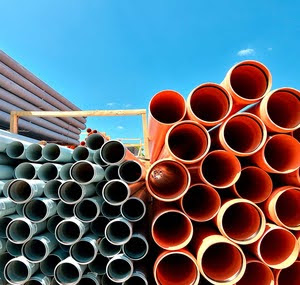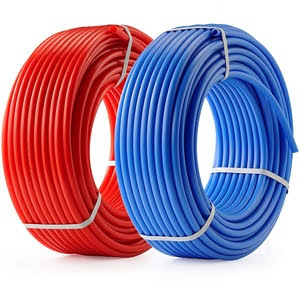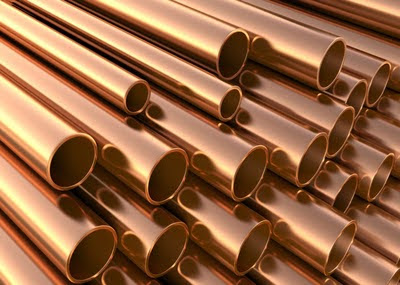
Did you know that there are several different types of material that pipes in your plumbing system are made of? Were you also unaware that the type of pipes can affect how your system works?
There is a huge selection of pipe materials on the market and knowing each one, along with how they will work for your home, is key to keeping your sewer system in top shape. Monkey Wrench Plumbing, Heating, Air & Electric specializes in all things water heater and plumbing related including expert knowledge in the different types of pipe materials.
In this article, we’ll take a look at the different types of materials your sewer system can be made of so that you can not only have a better knowledge of the pipe material but also make the best decision for your home.
Different Pipe Materials
Your plumbing system is made up of several different pipes.
These pipes can come in many different types of material, including:
- PVC or polyvinyl chloride
- PEX or cross-linked polyethylene
- ABS or acrylonitrile butadiene styrene
- Copper
- Cast Iron and Galvanized Steel
PVC Pipes
PVC, short for polyvinyl chloride, plastic is a common type of pipe that is used in homes. This type of pipe has many uses and can be installed both indoors and outdoors as well as underground. It is a strong, chemical-resistant rigid pipe that is somewhat heat-resistant and can be easily installed. PVC is often used to repair sections of broken cast-iron pipes as well as repairs to other drain lines.PVC pipe is also able to handle high water pressure, which is why it can also serve as your home’s main sewer line. Check out this article here as we go into more detail about what a mainline is and how important it is to your plumbing system. It is also a lighter-weight material, making it easier to work with than the more traditional galvanized steel piping options.

The inner lining of a PVC pipe is smooth, guarding it against sediment buildup. This quality makes PVC pipes less vulnerable to blockages.
- Water lines
- Sewer line
- Gas line
- Durable
- Cheaper than copper
- Non-toxic material
- Lowers sound of fluids running through
- Requires more work to install
- Can only handle fluids up to 140 degrees Fahrenheit
PEX Pipes
PEX, short for cross-linked polyethylene, is used for water supply lines. Our expert technicians say this is because it does not leave traces of rust or corrosion in your water as some other types of pipes (for instance, galvanized) have been known to do. PEX pipes are one of the most popular plumbing pipe options used for homes since they require little maintenance and are easy to install.They are also one of the strongest and most durable materials, which can make them leak-free for a long period.

- Water lines
- Heating systems
- Snow and ice melting systems
- In-floor heating
- Flexibility means fewer connections, meaning fewer chances for leaks
- Corrosion-resistant
- Costs less than copper
- Connections need specialized tools
- Not for outdoor use
ABS Pipes

- Sewer line
- Drain-waste-vent pipe systems
- Electrical insulation
- Durable
- Resistant to cold
- Cheap
- Easy connections
- Contains BPA or bisphenol A, which is a chemical that may cause cancer
Copper Pipes
Copper pipe is a mainstay in the plumbing industry and has been for several decades. Copper pipes can last for over 50 years and are used in common fixtures, like sinks, showers, and tubs. You’ll find copper pipes in new and old constructions alike. Copper pipes are resistant to corrosion, making them a popular choice since they can effectively protect your home’s water.Like PVC pipes, copper pipes are a match for high water pressure. On top of being able to handle high pressure, copper pipes can take hot and cold water just fine. It is also recyclable, making it a more environmentally friendly option if that is a priority for you.

- Water lines
- Remove this
- Durable
- Resistant to corrosion
- Ideal for hot and cold water
- More expensive
- Not ideal for tight spaces
- Requires soldering
Cast Iron and Galvanized Steel Pipes
Cast iron pipe and galvanized steel pipe are other commonly used pipes in homes. Though not so popular today, cast iron pipes and galvanized steel pipes are typically found in older homes. Cast iron pipe is typically used for sewer and drain lines, while galvanized pipes are common in gas piping.

- Sewer line
- Water lines
- Gas line
- Heat-resistant
- Reduces the sound of fluids
- Durable
- Subject to rust and mineral buildup
- Heavy
- Labor-intensive and harder to install
- Water lines
- Gas line

- Durable
- Not as expensive as copper
- Can rust, leading to contaminating water with lead
- Prone to mineral buildup, resulting in clogging
Wrapping Up and ‘Piping’ Down
Knowing the different kinds of pipe materials and understanding their uses, benefits, and drawbacks is key to having a happy (and healthy) plumbing system. Monkey Wrench Plumbing, Heating, Air & Electric understands that it can be difficult to navigate your plumbing system, and we are here to help make your life easier when it comes to everything plumbing-related, including understanding the anatomy of your home.
Having trouble deciding which pipe material is best for your home? Read this article as we dive deeper into the differences between Copper and PEX piping and which is best for your home.
If you live in the L.A. area and are experiencing any issues with your drains or are interested in a camera inspection to see what’s going on underneath your home, hit the ‘Book’ button below to request an appointment. Or if you have any other questions regarding any of your plumbing needs, you can call us at (818) 213-1773, and one of our call center representatives would be happy to help you.

